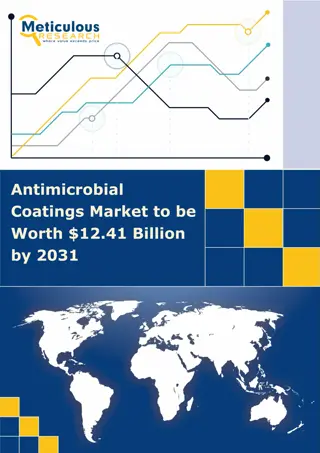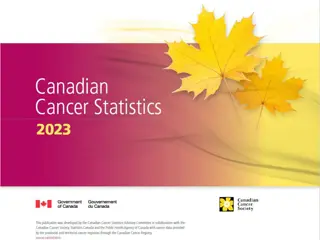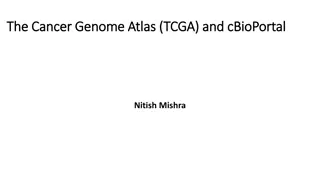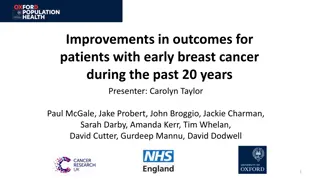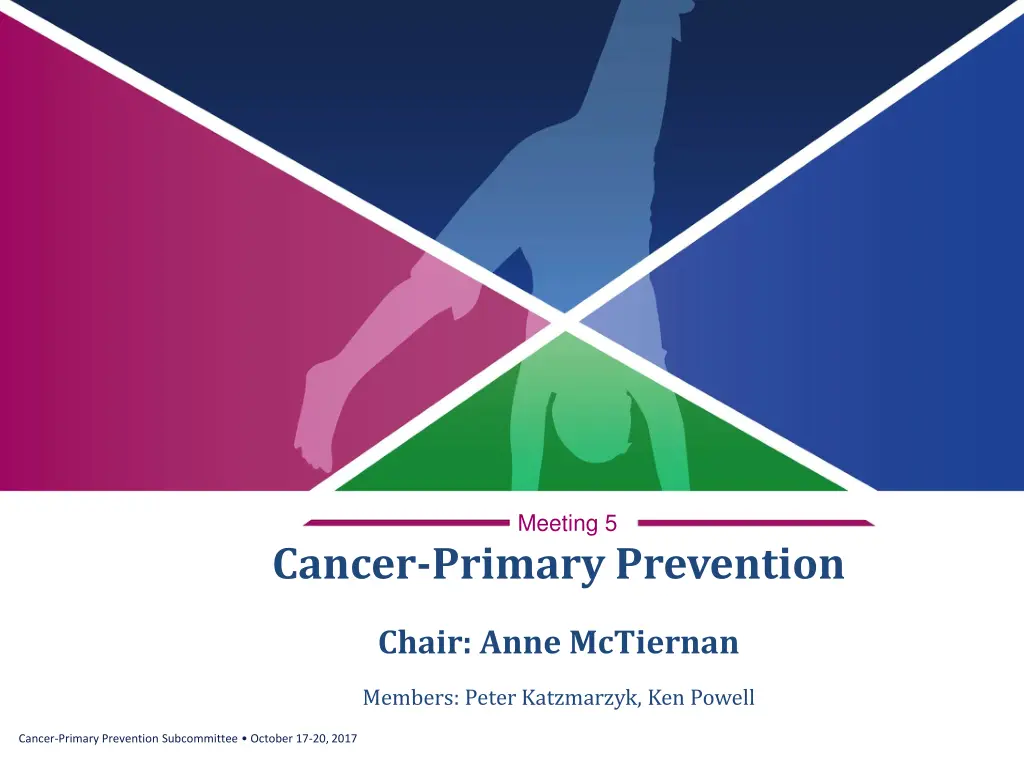
Physical Activity and Cancer Incidence Relationship Analysis
Explore the relationship between physical activity and cancer incidence, including factors like dose-response, variations by age and ethnicity, and impact on high-risk populations. Comprehensive search results and review findings are detailed to provide insights into this critical health issue.
Download Presentation

Please find below an Image/Link to download the presentation.
The content on the website is provided AS IS for your information and personal use only. It may not be sold, licensed, or shared on other websites without obtaining consent from the author. If you encounter any issues during the download, it is possible that the publisher has removed the file from their server.
You are allowed to download the files provided on this website for personal or commercial use, subject to the condition that they are used lawfully. All files are the property of their respective owners.
The content on the website is provided AS IS for your information and personal use only. It may not be sold, licensed, or shared on other websites without obtaining consent from the author.
E N D
Presentation Transcript
Meeting 5 Cancer-Primary Prevention Chair: Anne McTiernan Members: Peter Katzmarzyk, Ken Powell Cancer-Primary Prevention Subcommittee October 17-20, 2017
Experts and Consultants Consultant: Christine M. Friedenreich, PhD, Alberta Health Services & University of Calgary ICF Staff: Bethany Tennant, PhD HHS Staff: Alison Vaux-Bjerke, MPH 44 Cancer-Primary Prevention Subcommittee October 17-20, 2017
Subcommittee Questions 1. What is the relationship between physical activity and specific cancer incidence? Is there a dose-response relationship? If yes, what is the shape of the relationship? Does the relationship vary by age, sex, race/ethnicity, socio-economic status, or weight status? Does the relationship vary by specific cancer subtypes? Is the relationship present in persons at high risk, such as those with familial predisposition to cancer? 2. What is the relationship between sedentary behavior and cancer incidence? Note: Conclusions covered by Sedentary SC 45 Cancer-Primary Prevention Subcommittee October 17-20, 2017
Question #1 What is the relationship between physical activity and specific cancer incidence? Sources of evidence to answer question: Systematic reviews Meta-analyses Pooled analyses High-quality reports 46 Cancer-Primary Prevention Subcommittee October 17-20, 2017
Analytical Framework Systematic Review Question What is the relationship between physical activity and specific cancer incidence? Target Population Adults, 18 years and older Exposure All types and intensities of physical activity, including lifestyle activities/leisure activities Comparison Adults who participate in varying levels of physical activity Endpoint Health Outcome Incidence of cancer 47 Cancer-Primary Prevention Subcommittee October 17-20, 2017
Search Results (All Cancers): High-Quality Reviews1 and Reports Identification PubMed database searching N = 375 Cochrane database searching N = 37 CINAHL database searching N = 5 Records after duplicates removed N = 383 Screening Titles screened N = 383 Excluded based on title N = 288 Excluded based on abstract N = 47 Abstracts screened N = 95 Eligibility Full text reviewed N = 48 Excluded based on full text N = 7 Articles included from supplementary strategies N = 4 Included Articles included N = 45 1 Reviews include systematic reviews, meta-analyses, and pooled analyses. 48 Cancer-Primary Prevention Subcommittee October 17-20, 2017
Evidence: Cancers, Draft Grades Cancer Grade Physical activity protects: Bladder, Breast, Colon, Endometrium, Esophagus (adenocarcinoma), Renal*, Stomach Strong Moderate Lung Blood & lymphatics, Head & Neck, Ovary, Pancreas, Prostate Limited Not assignable (changed from Limited) Brain No effect of physical activity: Limited Thyroid (changed from Moderate) Limited Rectal* 49 *Conclusions being presented at PAGAC Meeting 5. Others were previously presented at PAGAC Meetings 3 & 4. Cancer-Primary Prevention Subcommittee October 17-20, 2017
Draft conclusion - PA effect by socioeconomic status grade Insufficient evidence across all cancer sites PAGAC Grade: Not assignable for all cancers reviewed 50 Cancer-Primary Prevention Subcommittee October 17-20, 2017
Draft Key Findings Rectal 9 cohort studies in largest meta-analysis (Liu, 2015) Highest vs. lowest odds ratio: Total PA (RR=1.07, 95% CI: 0.93-1.24) Dose-response not assessed in meta-analyses No dose-response effect in pooled analysis (Moore 2016) Sex: Inconsistent Race/ethnicity: No PA association in either Asians or Caucasians No other data Cancer subtypes: Not applicable High risk persons No information 51 Cancer-Primary Prevention Subcommittee October 17-20, 2017
Draft Conclusion Statement - Rectal PA Parameter Effect on Risk Grade highest vs. lowest PA No effect Limited Dose-response Insufficient evidence Not assignable Sex Insufficient evidence Not assignable Age Insufficient evidence Not assignable Race/ethnicity Insufficient evidence Not assignable Weight status Insufficient evidence Not assignable High risk persons Insufficient evidence Not assignable Cancer subtype Insufficient evidence Not assignable 52 Cancer-Primary Prevention Subcommittee October 17-20, 2017
Draft Key Findings Renal 1 meta-analysis (11 cohort, 8 case-control studies) [Behrens, 2013] Highest vs. lowest PA: RR=0.88; 95% CI: 0.79-0.97 1 pooled analysis (11 cohort studies) [Moore, 2016] Dose-response: significant linear relationship (Poverall < 0.0001) Sex: Similar PA effect in men and women Race/ethnicity: No PA association in Asians Weight: No variation by BMI Cancer subtypes, high risk persons No information 53 Cancer-Primary Prevention Subcommittee October 17-20, 2017
Draft Conclusion Statement - Renal PA Parameter Effect on Risk Grade Strong highest vs. lowest PA Dose-response Limited Sex Limited in men & women Age Insufficient evidence Not assignable Race/ethnicity Insufficient evidence Not assignable Weight status Limited in all BMI High risk persons Insufficient evidence Not assignable Cancer subtype Insufficient evidence Not assignable 54 Cancer-Primary Prevention Subcommittee October 17-20, 2017
Draft Conclusion Statement - Breast subquestions PA Parameter Effect on Risk Grade Strong highest vs. lowest PA Dose-response Strong Sex Not reviewed Not reviewed Age Insufficient evidence Not assignable Race/ethnicity Limited all groups Weight status Moderate in all BMI + family history Lower PA effect in HRT users Varies High risk persons Limited Cancer subtype Limited 55 Cancer-Primary Prevention Subcommittee October 17-20, 2017
Draft Conclusion Statement Colon subquestions PA Parameter Effect on Risk Grade Strong highest vs. lowest PA Dose-response Strong Age Insufficient evidence Not assignable Sex Strong men & women Race/ethnicity Insufficient evidence Not assignable Weight status Moderate in all BMI High risk persons Insufficient evidence Not assignable Cancer subtype proximal & distal Strong 56 Cancer-Primary Prevention Subcommittee October 17-20, 2017
Draft Conclusion Statement - Changed Grades Cancer PA Parameter Old Grade New Grade Blood & Lymphatics Sex Limited Limited Not assignable Not assignable Cancer subtype Overall Limited Not assignable Limited Brain Not assignable glioma meningioma No dose-response effect Esophagus Squamous Esophagus Adenocarcinoma Not assignable Limited Dose-response present Not assignable Limited No effect sex, age, weight, smoking status, cancer subtype Head & Neck Mixed Limited 57 Cancer-Primary Prevention Subcommittee October 17-20, 2017
Changed Grades continued Cancer PA Parameter Old Grade New Grade Lung Smokers Limited Moderate Ovary Dose-response absent Not assignable Limited Dose-response present Sex Not assignable Limited Limited Pancreas Not assignable No effect age, weight, smoking status, cancer subtype Prostate Limited Not assignable Stomach Sex No grade Not assignable Thyroid Overall Moderate Limited 58 Cancer-Primary Prevention Subcommittee October 17-20, 2017
Draft Research Recommendations Conduct epidemiologic studies on cancer risk: effects of physical activity in specific race, ethnic, and socio-economic groups, especially in African-American and Hispanic populations effect modification by age and weight status effects of specific types of physical activity more precisely determine dose-response effect of physical activity effect of physical activity in persons at high risk (such as high genetic risk, persons with precursor conditions, persons with risk factors) Conduct randomized controlled clinical trials to determine the effect on physical activity on cancer incidence 59 Cancer-Primary Prevention Subcommittee October 17-20, 2017
Committee Discussion What is the relationship between physical activity and specific cancer incidence? Is there a dose-response relationship? If yes, what is the shape of the relationship? Does the relationship vary by age, sex, race/ethnicity, socio-economic status, or weight status? Does the relationship vary by specific cancer subtypes? Is the relationship present in persons at high risk, such as those with familial predisposition to cancer? 60 Cancer-Primary Prevention Subcommittee October 17-20, 2017
Next Steps All draft sections on specific cancers have been written and sent for editing review Draft remaining sections of cancer chapter of PAGAC report: introduction, methods, cancers not graded, research recommendations, tables, and figures 61 Cancer-Primary Prevention Subcommittee October 17-20, 2017




